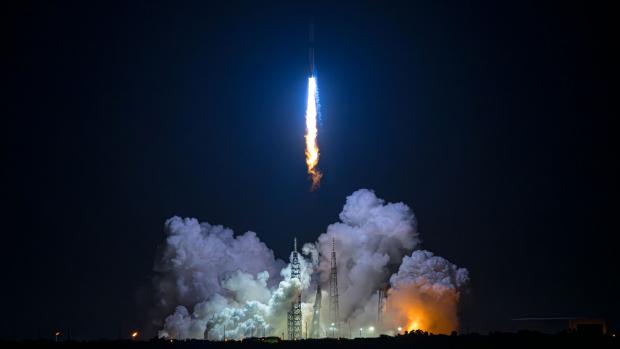
Breaking News
Endless Opportunities on Life's Highway
THE UNCONSTITUTIONAL INCOME TAX
 WOW: Schumer now privately BEGGING to reopen the Gov – Liberal Hivemind
WOW: Schumer now privately BEGGING to reopen the Gov – Liberal Hivemind
 Obamacare's Devastating Legacy: Skyrocketing Costs, Useless Coverage, and Windfall Profits...
Obamacare's Devastating Legacy: Skyrocketing Costs, Useless Coverage, and Windfall Profits...
Top Tech News
 Future of Satellite of Direct to Cellphone
Future of Satellite of Direct to Cellphone
 Amazon goes nuclear with new modular reactor plant
Amazon goes nuclear with new modular reactor plant
 China Is Making 800-Mile EV Batteries. Here's Why America Can't Have Them
China Is Making 800-Mile EV Batteries. Here's Why America Can't Have Them
 China Innovates: Transforming Sand into Paper
China Innovates: Transforming Sand into Paper
 Millions Of America's Teens Are Being Seduced By AI Chatbots
Millions Of America's Teens Are Being Seduced By AI Chatbots
 Transhumanist Scientists Create Embryos From Skin Cells And Sperm
Transhumanist Scientists Create Embryos From Skin Cells And Sperm
 You've Never Seen Tech Like This
You've Never Seen Tech Like This
 Sodium-ion battery breakthrough: CATL's latest innovation allows for 300 mile EVs
Sodium-ion battery breakthrough: CATL's latest innovation allows for 300 mile EVs
 Defending Against Strained Grids, Army To Power US Bases With Micro-Nuke Reactors
Defending Against Strained Grids, Army To Power US Bases With Micro-Nuke Reactors
Blue Origin Has a Light Riding on November New Glenn Flight

This will determine if they can reuse the booster every 6 months. Any flight problems will lead to an FAA investigation that will delay third launch by 3-6 months. Here we go over the engine production rate.
Blue Origin is scaling BE-4 manufacturing aggressively at their Huntsville, AL facility to support New Glenn and ULA's Vulcan. The current production rate is ~50 engines per year and will ramp to 100-150 by late 2026. This supports ~7-14 New Glenn boosters annually at full tilt plus Vulcan's 2 per flight.
If they cannot land and reuse boosters and have clean flights in November and then all launches in 2026, then there is very low chance that they will get a NASA $2 billion restart of their lunar landing program. The Lunar landing program will add 5 more challenging launches with at least unmanned missions to the moon. If they are still showing problems getting beyond 2-4 launches per year, then you could not add 5 launches and expect to do them in a timely gasion.
Booster (First Stage): Powered by 7 BE-4 engines. Each BE-4 delivers ~550,000 lbf (2,450 kN) of sea-level thrust using oxygen-rich staged combustio
Upper Stage (Second Stage): Powered by 2 BE-3U engines. These are vacuum-optimized variants of the BE-3 (from New Shepard), each producing 175,000 lbf (778 kN) of vacuum thrust.
If there are problems landing the booster, there could end up being modifications to the engines which would slow the production ramp.
BE-3U production is tied to the upper stage builds. Two are used for each upper stage. Blue has completed 8 upper stages as of mid-2025, implying a cadence of 10-20 engines/year soon.
They are building a fleet of 10+ boosters and matching uppers to enable rapid reuse iteration, but delays in certification have historically bottlenecked output.
New Glenn's maiden flight was in January 2025 delayed from 2020 targets due to BE-4 development hurdles and supply chain issues. The booster recovery—a key reusability goal—failed. The 70-meter-tall first stage executed a boost-back burn using 3-4 BE-4s to target the Atlantic landing barge Jacklyn (10 km downrange). It reached the reentry interface (100 km altitude) intact, with heat shield tiles and grid fins deploying as planned. But during the final landing burn (1 km altitude), the engines failed to relight. There was a problem with slosh-induced oxidizer shortfall in the turbopumps. The booster tumbled, hit the water at ~10-15 m/s, and was lost—creating a debris field but no environmental hazards.

 SpaceX Heat Shield and Starship Mass Production
SpaceX Heat Shield and Starship Mass Production

